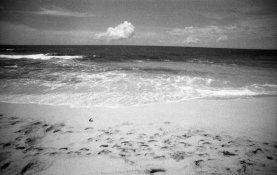brainmonster
Member
It seems like most people use 400 speed film over 200 speed film. I can see the reason, as it will give you better low light pictures than 200 speed film and let you use higher shutter speeds. However, I live in Hawaii and I’m finding some of my beach shots come out really grainy, and I’m trying to achieve better bright light photos. Using Ultramax, some of the bright shots look absolutely terrible even at 1/2000 shutter speed and I thought that this type of film was supposed to allow for exposure latitude.
Also using Ultramax, I’m finding it too grainy for large prints (11x14) and wondering if Gold 200 or Portra 160 will have finer film grain and help me achieve some beautiful noon shots and better print quality.
I also have a roll of Ektar 100, will this require a huge amount of light or how does it compare to sunny days vs Portra 160.
And, why is Portra 400 more expensive than 160 and Ektar?
From what I’ve read, 200 speed film used to be “standard consumer grade” but no longer - in most big box stores, 200 film is sold here in Hawaii, I’m not sure if that’s because it’s bright and sunny here.
After looking at some daytime Portra 400 shots on reddit, I’m not that impressed with some of the daytime shots, it seems like the grain is somewhat enlarged and some scenes just do not look as good as the low light 400 photos I’ve seen. I’m wondering if more people should try Portra 160.
My two cameras are a Minolta 70, and IQZoom 160 (P&S). Both have flash built in, and my point and shoot has automatic flash. It also has a low maximum shutter speed, something like 1/400 but also a high maximum aperture of F4.5, so I’m wondering if using 200 speed film would be better to achieve better bright light photos, plus just using the flash indoors for the P&S which would need flash even with 400 speed film.
Also using Ultramax, I’m finding it too grainy for large prints (11x14) and wondering if Gold 200 or Portra 160 will have finer film grain and help me achieve some beautiful noon shots and better print quality.
I also have a roll of Ektar 100, will this require a huge amount of light or how does it compare to sunny days vs Portra 160.
And, why is Portra 400 more expensive than 160 and Ektar?
From what I’ve read, 200 speed film used to be “standard consumer grade” but no longer - in most big box stores, 200 film is sold here in Hawaii, I’m not sure if that’s because it’s bright and sunny here.
After looking at some daytime Portra 400 shots on reddit, I’m not that impressed with some of the daytime shots, it seems like the grain is somewhat enlarged and some scenes just do not look as good as the low light 400 photos I’ve seen. I’m wondering if more people should try Portra 160.
My two cameras are a Minolta 70, and IQZoom 160 (P&S). Both have flash built in, and my point and shoot has automatic flash. It also has a low maximum shutter speed, something like 1/400 but also a high maximum aperture of F4.5, so I’m wondering if using 200 speed film would be better to achieve better bright light photos, plus just using the flash indoors for the P&S which would need flash even with 400 speed film.








 Lifeguard Tower
Lifeguard Tower




